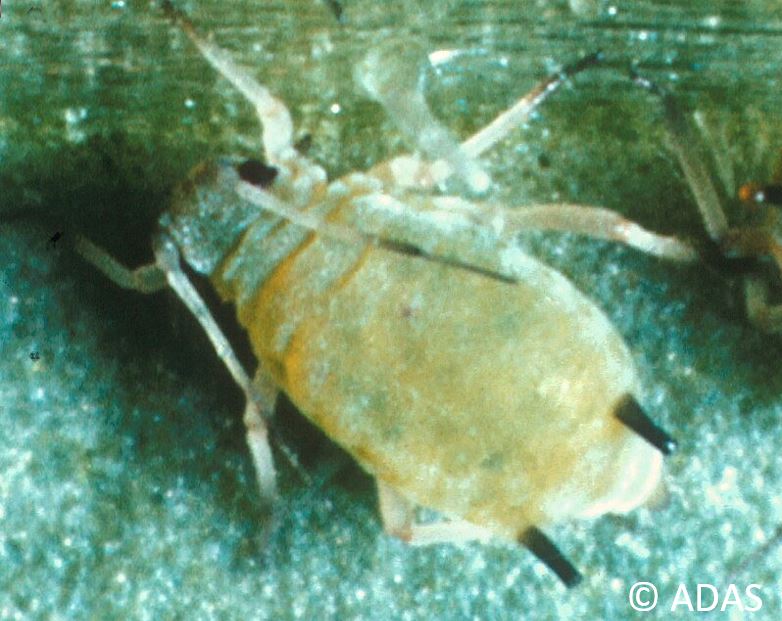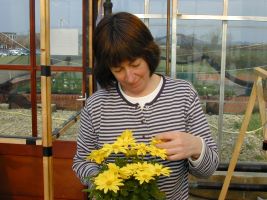Please click here to access the main AHDB website and other sectors.
- Home
- Testing new controls for troublesome aphids
Testing new controls for troublesome aphids
By Elysia Bartel and Jude Bennison, November 2020
The melon and cotton aphid (Aphis gossypii) is a serious pest of Hardy Nursery Stock. This small, yellow, green or almost black aphid species can multiply quickly in warm conditions and clusters toward the top of the plant, causing plant death in severe cases. Aphis gossypii is resistant to some insecticides such as pyrethroids and it can be difficult to control with the available arsenal of products. Biological control with parasitoids and predators in an IPM programme is important for tackling this pest. Plant protection products are also important to knock down fast-growing populations of aphids and to clean up crops before dispatch. Growers need new products to control this aphid, especially those compatible with IPM and providing different modes of action to help prevent resistance development.
A trial at ADAS Boxworth in the SCEPTREplus programme tested six novel plant protection products for efficacy against A. gossypii. Five bioprotectants and one conventional insecticide were compared with an untreated control and flonicamid (Mainman), used as the industry standard. The products were tested on Hebe, var. ‘Purple Pixie’ in a polytunnel. The trial plants were infested with A. gossypii one week before the first application of treatments, all were applied in 600 L / ha water at manufacturer recommended rates and timings.
One bioprotectant showed real promise, significantly reducing numbers of A. gossypii compared with untreated control from six days after the first application and providing 80% control after 13 days. This product also significantly reduced a natural infestation of peach-potato aphid (Myzus persicae) compared with untreated control from six days after the first application. A conventional insecticide significantly reduced A. gossypii numbers compared with untreated control after 22 days and M. persicae numbers from 13 days after the first application. Two other bioprotectants, significantly reduced numbers of M. persicae in comparison with untreated control, on one date, 13 days from first application. If approved for use, one bioprotectant looks particularly promising and one conventional insecticide and two other bioprotectants could be useful for protection against aphids on ornamentals within an IPM or resistance management programme.


Elysia Bartel


